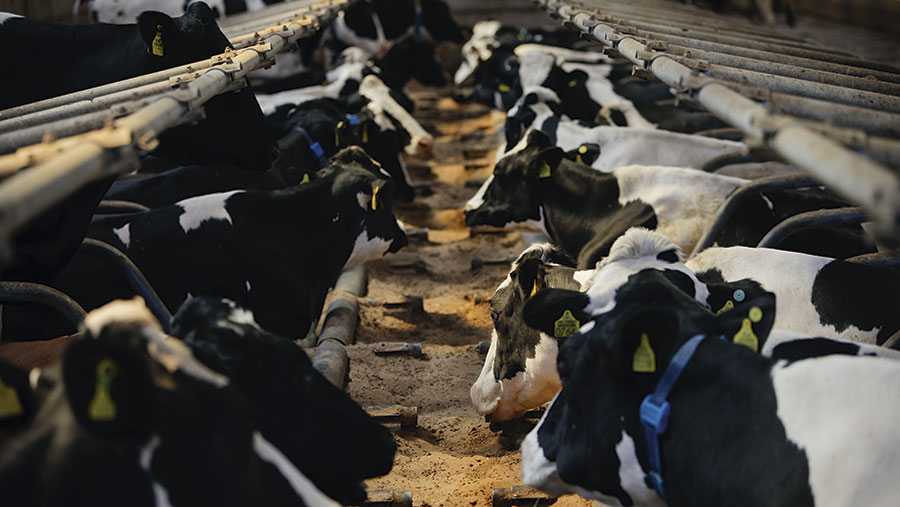Tips on reducing feed waste on your dairy

There are four key areas where feed can be wasted and underused: in the field, during storage, at feed-out and inside the cow.
Results from the latest Alltech on-farm pilot study found these combined losses could cost businesses as much as £216 a cow a year.
Ian Leach from Alltech says: “Based on a 200-cow herd, this could lead to financial losses of up to £43,200 over 12 months.”
However, the reality is this figure could be much higher depending on the system in place. Tackling feed waste therefore offers a huge opportunity to boost the bottom line.”
See also: How to carry out cow muck assessments
Below, we take a look at each of these four stages to see where savings can be made.
1. In the field
Feed losses in the field can occur because of factors including:
- Reseeding intervals Aim to reseed 15% of the farm every year and keep leys down for three to four years for optimal energy density. This can be extended with excellent grassland management, but is very dependent on the seed variety used.
- Grass wilting time Wherever possible, grass for silage should be wilted as quickly as possible and for no longer than 24 hours. Where multicut systems are practised, it has been found that dry matter (DM) of grass can already be at 30% at cutting, so some fields might not require any wilting at all.
2. During storage
Feed losses during storage can be significant, with average losses of £57 a cow a year recorded. Farmers should therefore focus on:
- Bulk density Focus on good clamp consolidation to achieve a bulk density of 720-750kg/cu m of fresh matter, or 220-250kg/cu m of dry matter, to reduce the risk of aerobic spoilage.
- Sheeting the clamp overnight Always aim to sheet the clamp overnight while harvesting, securing the sheet in place with adequate weights, preferably mats or tyre sidewalls.
- Rolling the clamp Avoid rolling the clamp in the morning before putting fresh crop into the pit, as this can cause oxygen to be sucked back in as the fermentation process has already started.
3. At feed-out
Feed losses due to reduced intakes can be affected by various environmental factors:
- Lunge space Should be 90cm. Often there is only 30-50cm space, and in these instances, where options exist, take out walls or boarding to reach the desired space.
- Space to access feed Should be 65cm a cow, or two rows of cubicles to one feed trough of the same length.
- Water trough access and flow rate Target is 10cm a cow and 20 litres/minute.
Inside the cow
Key signposts to look out for that might signify underuse of feed inside the cow include:
- Grain and fibre in the dung A dung sieve can accurately assess the level of grain and fibre in the dung. This measure is an indicator of the level of sub-optimal feed use, which can result in poor feed conversion efficiency (FCE).
- Ration sorting Balled silage and uneaten elements of the ration can signal ration sorting. Mixing order, rotation time, over/underfilling and machine wear all play a big part in addressing this issue.
- Fertility levels Healthier, more fertile cows are more productive and will use their feed inputs more efficiently. Fertility levels should therefore be monitored, to achieve a calving interval of 365 days for lower-yielding herds and about 390 days for higher-yield herds where longer voluntary waiting periods are in place
Expert assessment
Alltech is offering farmers a free, in-depth on-farm assessment with the aim of increasing profit margins by a minimum of 1.2p/ litre, by reducing feed waste and underuse.
Following the assessment, farmers are provided with a concise report containing actionable recommendations, to help them make informed strategic decisions on what steps, and potential investment, are required to improve margins.

